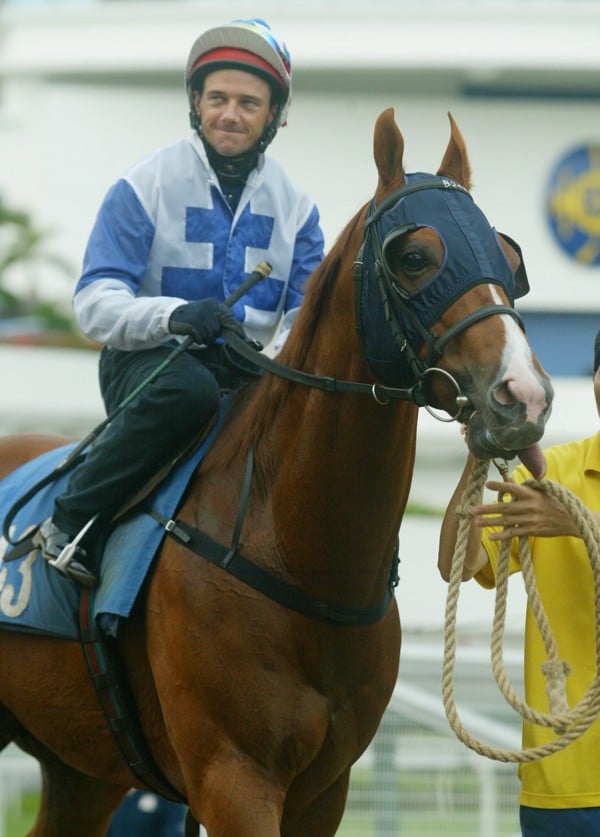Addressing your thoughts, questions and statements about Hong Kong racing. Have something to say? Send a tweet to @SCMPRacingPost.
Aethero in The Everest takes the race to another level of interest – @Wayne1609
The resolution of the quarantine stand-off between Australia and Hong Kong is a big relief to all involved – it has been a headache for over two years – but those expecting Aethero to be an automatic starter in The Everest need to pump the brakes a little.
In reality, this outcome will barely create a ripple on the track.
Horses from Down Under have been able to travel and compete at Sha Tin under interim arrangements that were put in place in March, while the constraints never affected imports moving to Hong Kong trainers on a permanent basis.
The real change is that horses can again move freely from Hong Kong to Australia, but while it opens up a whole array of options theoretically, it is unlikely there will be a flood of them travelling to compete in Melbourne or Sydney features.
Australia-Hong Kong quarantine dispute resolved after two years
In the past seven years, just two Hong Kong horses have made the trip to Australia – Caspar Fownes’ Lucky Nine in 2013 (he ran second in the Manikato Stakes and sixth in the VRC Sprint Classic) and John Moore’s Dominant (fifth in the Ranvet Stakes and sixth in the Sydney Cup) in 2015.
Even when you take into account the two years it was off-limits, that is not a big number.
The only Hong Kong-based horse to ever win in Australia was David Oughton’s Cape Of Good Hope – he landed the Australia Stakes at Moonee Valley in 2005.
The overall record stands at one win, four seconds and eight thirds from 47 starts. That’s not a great strike rate.
Maybe the uptick in big-money races like The Everest and All-Star Mile will encourage more to have a crack, but timing is a real challenge.
Horses have to spend six weeks in quarantine – two weeks pre-export and two weeks after arriving in Australia and then an additional two weeks once they land back in Hong Kong.
So if you compete during the Sydney or Melbourne spring, it is likely to compromise your build up to the Longines Hong Kong International Races.
Take The Everest, for example – assuming it is run on a similar mid-October date again.
Hong Kong jockeys denied chance to ride in Australia’s mega-rich The Everest and Golden Eagle
Whoever picks up Aethero next season (because John Moore is being forced into retirement by the Jockey Club) will have to get him going early with only one potential race for him in Hong Kong – the Class One Chief Executive’s Cup (1,200m) on opening day (early September) – before he would have to enter quarantine.
Maybe you go to Australia a little early and have a run a fortnight before The Everest – but that depends on what the Jockey Club is comfortable allowing.
Say Aethero’s new trainer goes through with it all, runs in The Everest, then flies back to Hong Kong. He wouldn’t be back in his own box until early November.
That leaves a couple of weeks to get up for the Jockey Club Sprint – probably a bit tight when taking into account all the travel – affecting his ability to be at his absolute best for the December showcase.
It is not impossible but if connections decide to chase the riches on offer Australia, there will be opportunity costs at home. Travelling a horse is hard. What is the priority? It’s not as if Hong Kong features are just chump change.
A similar thing would occur in the autumn in terms of the preparation for Champions Day at the end of April.
We’ll just have to wait and see if anyone is game enough to try and take advantage of the opportunities at hand.
But there are other offshoots of this outcome. Perhaps, instead of attracting the cream of Hong Kong’s crop, maybe a horse like Pakistan Star could continue his career in Australia.
Zac Purton to ride lightest in years to partner irresistible Aethero in Group One sprint
While we’re still waiting for an official word from connections, it is fair to say he’s run his last race in Hong Kong but he could be a project for someone there, or in New Zealand, Dubai or Britain, if he is to continue.
Away from the racing angle, the result is a big one for those who rehome retired Hong Kong gallopers.
There are more horses in the Jockey Club system than ever before – almost 1,400 – which also means number of retirements is higher than ever.
Historically, people in Australia took on a big percentage of those horses and given that avenue was cut-off for two years, it put a lot of pressure on others. This definitely helps.
So while those dreaming of big-name Hong Kong horses making regular hit-and-run missions to Australia are likely to be disappointed, the quarantine resolution will have a positive impact in the long run.




















